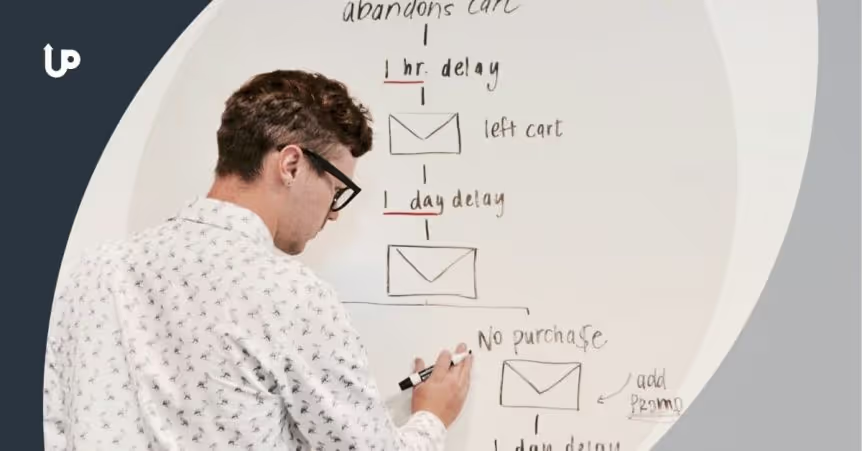The number of email users is expected to grow to 4.6 billion users in 2025. (In 2020, there were 4 billion users.) What do these numbers tell you?
Email is here to stay.
As a business owner, you must leverage email personalization to get the most out of your campaigns. Think reduced cart abandonment, higher open and click-through rates, and increased customer satisfaction.
These are just some of the benefits of email personalization. In this article, you'll learn how you can create tailored content based on their qualities and stage in your marketing funnel.
What Is Email Personalization? Why Is It Important?
Email personalization is the practice of using specific audience data so that you can send emails that speak directly to them. Unlike generic emails, personalized emails impact your metrics more positively. Here are the advantages of personalizing your email campaigns:
- It humanizes your brand. Adding a personal touch to your messages helps you become more relatable — like a friend they’ve known for years.
- Better experience in reading emails. People are bombarded with emails each day. By personalizing, they enjoy and may even look forward to your brand messages.
- Positive impact on your metrics. Your open rates, click-throughs, conversions, and ROI improve. Your bounce rate, unsubscribes, and spam complaints decrease.
What can be personalized in an email? You can personalize anything from your recipient’s name to their behaviors to their anniversaries and more, depending on what your email marketing platform allows.
Email Personalization Stats You Should Know
These stats show why personalizing your emails makes your campaigns even more successful.
- Personalized subject lines are 26% more likely to be opened. - Campaign Monitor
- 50% of companies feel that they can improve email interaction among subscribers by increasing personalization. - Experian
- Segmented campaigns lead to a 760% increase in email revenue. - Campaign Monitor
- 83% of consumers are willing to share their data for a more personalized experience. - Accenture
- 68% of Americans say that they base their decision to open an email on the “from” name. - Campaign Monitor
8 Personalization Techniques for More Impactful Emails
Here’s how you can start personalizing your emails to provide more relevant content, grab their attention, and achieve the results you’re looking for.
1. Collect information about your target customers
Are you gathering enough data from your audience when they sign up for your email list? Most websites ask only for a name and email address, which can limit your personalization options. (The more you know, the better you’re able to communicate with them.)
Aside from their name and email, you could require them to enter their location, occupation, and select the kind of email they prefer to receive. To get the conversion, make sure to offer something valuable in return like an ebook, ultimate guide, or free training. Moreover, you need to make that value clear in your signup form copy.
2. Build customer personas

Supercharge your email personalization strategy by creating buyer personas. A buyer persona is a profile that represents your ideal customer. While a persona is fictional, it’s based on thorough research. We have a guide that helps you develop personas for email marketing.
Using the data you gather, you can then write emails that are more relevant to their needs. For example, if one of your personas is “Terry,” a stay-at-home parent who’s juggling way too much stuff, then you would relate your solutions specifically to her situation.
Another helpful tip would be to write in the language that they normally use. Barkbox, a monthly dog toy subscription service, uses phrases like “Complete your pup’s order” and “Learn more about our pack” to connect with their customers who are dog parents.
3. Add your subscriber’s first name in the subject line
One of the most common email personalization best practices is calling out your subscriber in the subject line. Small details like this can make people feel special.Check out these examples:
- Are you coming, [name]?
- We missed you, [name]
- [name], it’s time to rethink your business strategy
- [name], here’s your workout for the week
- Here’s a gift for you, [name]
If not in the subject line, you could also add their first name in the preview text so that your recipient will still be able to see it. Just make sure to include their name early on to prevent it from getting truncated especially when they’re using their mobile devices. Here’s an example:

4. Segment your subscribers into different time zones
Many e-commerce businesses often serve customers in different time zones. So, if you’re sending one email to a global audience all at once, you’d be missing out on opportunities to connect when they’re likely to be active. Your emails are likely to get lost in the clutter.
Finding out where your subscribers are located is the first step to personalizing your sending times. Thankfully, email marketing tools can help solve your time zone struggles through their analytics. It would also be a good practice to collect location data from your audience during the signup process.
Here’s a pro tip: No matter where your subscribers are located, keep your emails relevant and not time-sensitive. (Unless you’re sending an invite to a webinar or promoting a seasonal sale.)
5. Send emails from a person
In most instances, businesses use their brand names when sending emails to their subscribers to be easily recognized, which makes sense.
But here’s what’s interesting: Hubspot did a marketing experiment in which they sent two emails — one was from “Hubspot” and the other used a real person’s name from their marketing team.
The result? The email that was sent using a real person’s name got a click-through rate of 0.96% compared to the email from “Hubspot” with a CTR of 0.73%.
If Hubspot’s experiment worked, then it’s worth the effort to personalize your emails this way. You can even go further by adding your image to your email signature instead of your brand logo.
6. Personalize by using dynamic content
Dynamic content refers to email content that changes according to certain variables about your subscriber. Such variables include their gender, location, purchase history, website activity, last content they viewed, and more.
Check out this dynamic email content by Adidas. They dynamically switched up their product recommendations based on their recipient’s gender. By doing this, they can compel them to make a purchase.

Using dynamic content is a great way of showing your audience that you care about their preferences. Plus, you experience the benefit of saving a significant amount of time because you only create one email template instead of creating different emails every time for different segments of your audience.
7. Create a preference center
A preference center is a page that gives your subscribers the freedom to pick their preferred emails and how frequently they want them delivered to their inbox. Unfortunately, not all marketers take the time to create an email preference center.
Preference centers take email personalization to the next level. They reduce the number of people unsubscribing to your emails, because now, they’re getting the content they expect. Also, preference centers help you figure out what makes your audience tick.
Maximize your preference center’s potential by offering it the moment people subscribe to your newsletter. Moreover, link to it from within your emails (at the bottom) so that subscribers can update their preferences any time.
8. Write like you talk
A well-written, personalized email isn’t just about providing useful information. Your readers should also feel like they’re reading something that a real person wrote so they can connect emotionally with you.
In other words, write less like a robot and more like yourself. How would you speak with a client or potential customer in person? Be mindful of your voice and tone. It also helps to write in the first person point of view (PoV) and address your reader as “you.” If it helps, use a free readability tool like Hemingway Editor.
Wrapping Up
Relevance is everything in email marketing as it strengthens people’s connection with your brand. If you’re not using email personalization yet, now is the best time to do it. After all, email isn’t going away and stats reveal how consumers are demanding more personalized experiences.
As marketers and business owners, we ought to do more. We hope that you can use the tips above to create an effective email personalization strategy that boosts your click rates and conversions.
When running an UpViral giveaway or referral campaign, you’ll be able to go beyond the regular “first name” personalization. You get to pick from various personalization options including their total points earned, campaign signups, and more. Try UpViral here for 14 days, risk-free, if you haven’t yet!
Do you know of other email personalization tips? Let us know in the comments section below.





.png)